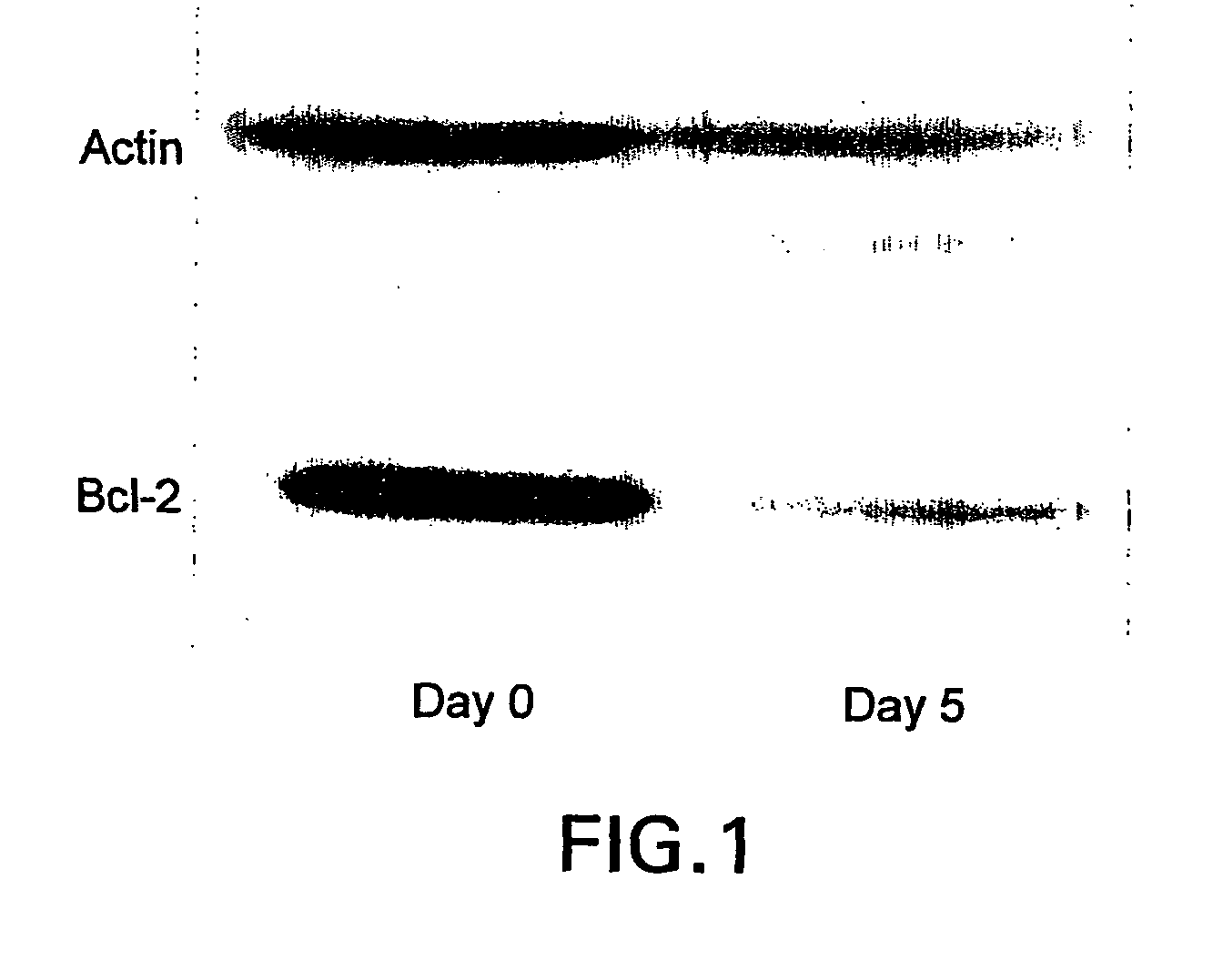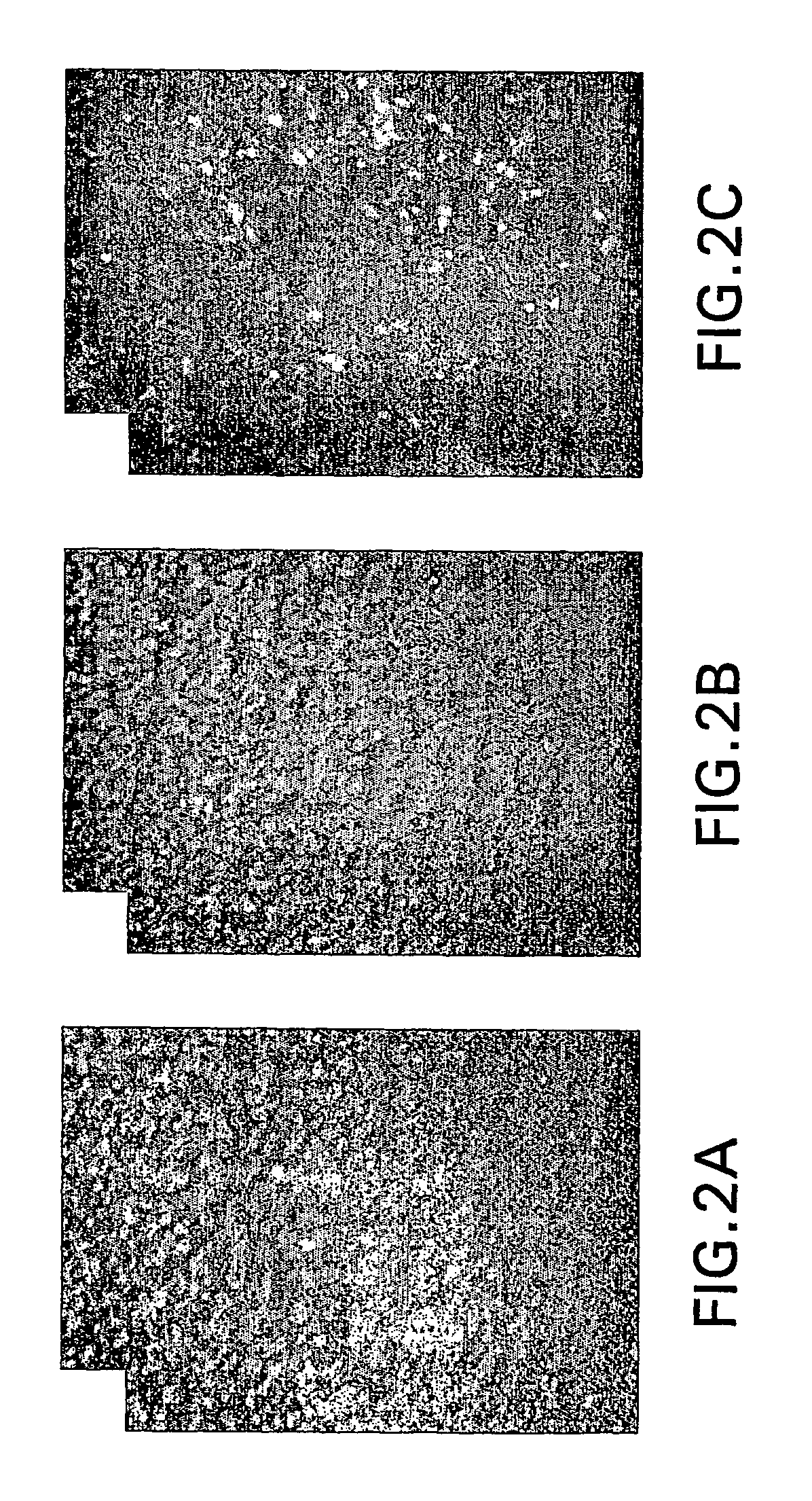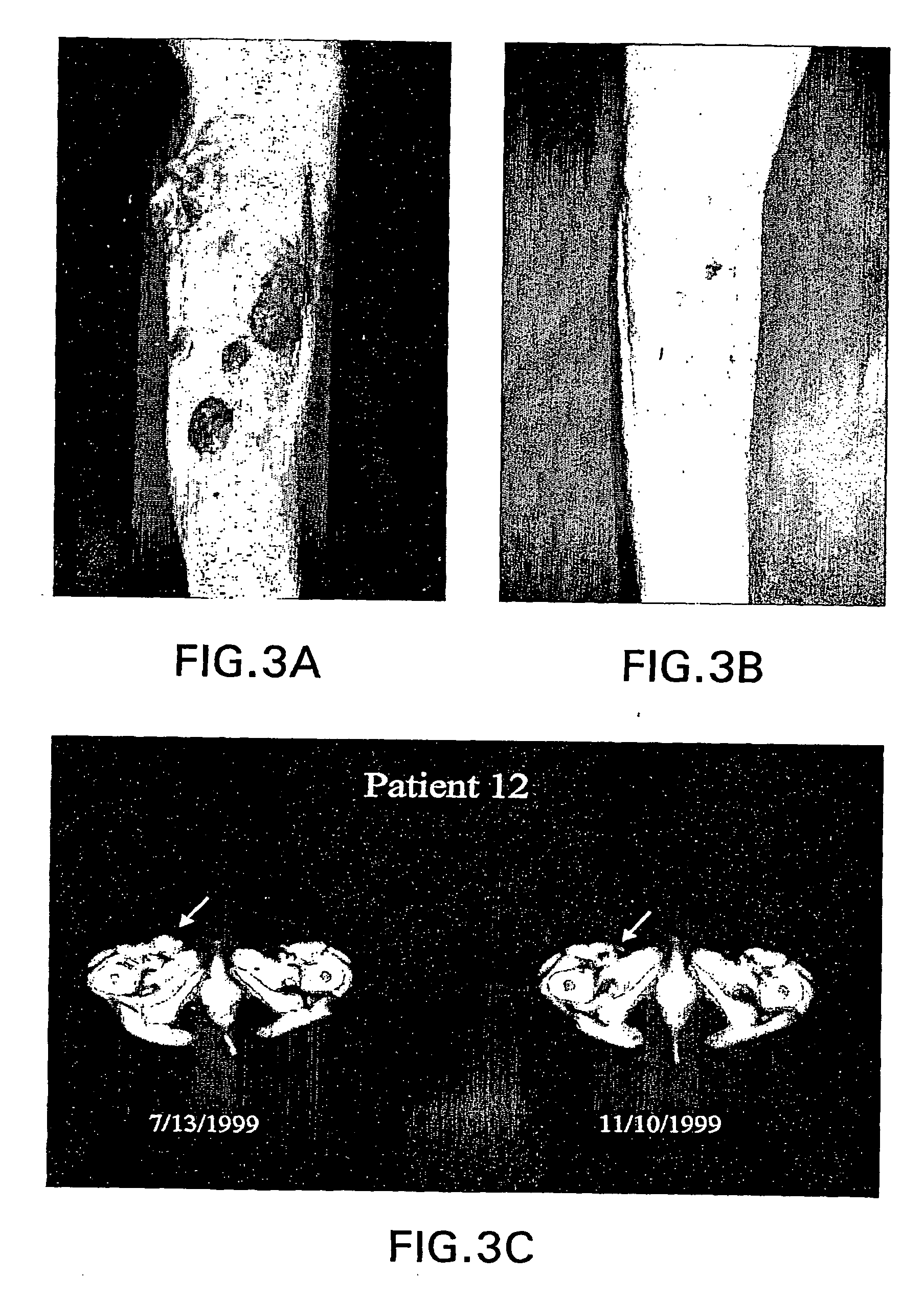Methods of treatment of a bcl-2 disorder using bcl-2 antisense oligomers
a bcl-2 and antisense oligomer technology, applied in the field of bcl2 antisense oligomers, can solve the problems of affecting the specificity of traditional cancer treatment approaches, and affecting the expression of both, so as to achieve significant therapeutic responses, low toxicity, and high tolerance
- Summary
- Abstract
- Description
- Claims
- Application Information
AI Technical Summary
Benefits of technology
Problems solved by technology
Method used
Image
Examples
example 1
6. EXAMPLE 1
Bcl-2 Antisense Therapy Chemosensitizes Malignant Melanoma
[0132] This example demonstrates the successful use of a bcl-2 antisense oligomer for the treatment of patients with advanced malignant melanoma. In this study, six of the patients, who were treated with the bcl-2 antisense oligomer, were systemically administered the oligomer at 5.3 or 6.5 mg / kg / day for seven days, in combination with a chemoagent. The findings reported in this Example demonstrate that, when a bcl-2 antisense oligomer is administered in high doses for short periods of time, the treatment exhibits low toxicity as scored by common toxicity criteria, reduces Bcl-2 within the tumor, facilitates apoptosis, and leads to objective tumor responses and prolonged patient survival. Included among the responding patients were several with "treatment resistant cancer" who had experienced progressive disease during treatment with standard anticancer agents, where treatment with standard agents such as dacarbaz...
example 2
7. EXAMPLE 2
A Phase I, Pharmacokinetic and Biologic Correlative Study of G3139 (Bcl-2 Antisense Oligonucleotide) and Docetaxel in Patients with Hormone-Refractory Prostate Cancer
[0154] This example demonstrates the successful use of a bcl-2 antisense oligomer for the treatment of patients with hormone-refractory prostate cancer, which is resistant to androgen ablation therapy and cytotoxic chemotherapy. The bcl-2 antisense oligomer was systemically administered at 5 to 7 mg / kg / day for five days, in combination with a chemoagent. This study reports that two patients, who were treated with the bcl-2 antisense oligomer and a chemoagent, demonstrated responses to the treatment. The findings reported in this Example demonstrate that, when a bcl-2 antisense oligomer is administered in high doses for short periods of time, the treatment exhibits low toxicity while demonstrating objective clinical responses. The approach outlined in this study provides a broadly applicable strategy for trea...
example 3
8. EXAMPLE 3
Phase I Trial of Genasense.TM. (G3139), a Bcl-2 Antisense, in Refractory or Relapsed Acute Leukemia
[0158] This example demonstrates the successful use of a bcl-2 antisense oligomer for the treatment of patients with acute leukemia. The bcl-2 antisense oligomer was systemically administered at 4 mg / kg / day for ten days, in combination with two chemoagents. This study reports that five of ten patients, who were treated with the bcl-2 antisense oligomer and a chemoagent, demonstrated responses to the treatment. Moreover, responses were also noted in patients which were administered fludarabine and cytosine arabinoside, at doses lower than the standard doses normally used for treatment of leukemia or other cancers. The findings reported in this Example demonstrate that objective clinical responses can be obtained when a bcl-2 antisense oligomer is administered for a short period of time.
8.1. MATERIALS AND METHODS
[0159] G3139 (4 mg / kg / day) was given to patients (ten patients i...
PUM
| Property | Measurement | Unit |
|---|---|---|
| time | aaaaa | aaaaa |
| time | aaaaa | aaaaa |
| length of time | aaaaa | aaaaa |
Abstract
Description
Claims
Application Information
 Login to View More
Login to View More - R&D
- Intellectual Property
- Life Sciences
- Materials
- Tech Scout
- Unparalleled Data Quality
- Higher Quality Content
- 60% Fewer Hallucinations
Browse by: Latest US Patents, China's latest patents, Technical Efficacy Thesaurus, Application Domain, Technology Topic, Popular Technical Reports.
© 2025 PatSnap. All rights reserved.Legal|Privacy policy|Modern Slavery Act Transparency Statement|Sitemap|About US| Contact US: help@patsnap.com



